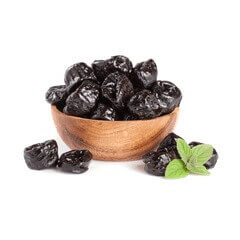The Ultimate Guide to Basmati Rice
The Ultimate Guide to Basmati Rice, Origins, Cooking Tips, and Health Benefits. Basmati rice, known for its delicate aroma, distinctive flavor, and long, slender grains, has gained popularity worldwide. In this comprehensive guide, we will explore the rich history and origins of basmati rice, provide expert cooking tips to achieve perfectly fluffy grains, and delve into the nutritional value and health benefits that make it a nutritious choice for a balanced diet. Whether you’re a culinary enthusiast or simply curious about this beloved Basmati rice variety, as we uncover the secrets of basmati rice and unlock its culinary potential.
The Origins and History of Basmati Rice
The origins and history of Basmati rice are deeply rooted in the agricultural practices and cultural traditions of the Indian subcontinent. Believed to have originated in the foothills of the Himalayas, Basmati rice has a history that spans centuries. Renowned for its exceptional aroma, delicate flavor, and long grains, it has been cherished by royalty and esteemed for its quality. Basmati rice holds a special place in the culinary heritage of the region, and its cultural significance continues to influence cuisines around the world. Understanding the origins and historical journey of Basmati rice provides valuable insights into its unique characteristics and elevates the appreciation of this prized grain.
Cooking Tips for Perfectly Fluffy Basmati Rice
Properly Rinse the Rice
Before cooking basmati rice, it’s essential to rinse it thoroughly to remove any excess starch. Place the rice in a fine-mesh sieve and rinse it under cold running water until the water runs clear. This step helps achieve fluffy and separate grains.
Soak the Rice
Soaking basmati rice for about 30 minutes before cooking can help improve its texture. This step allows the grains to absorb water evenly and leads to more uniform cooking. Drain the soaked rice before adding it to the cooking pot.
Use the Right Water-to-Rice Ratio
To achieve perfectly cooked basmati rice, follow the recommended water-to-rice ratio. Typically, for every cup of rice, use 1.5 cups of water. However, you can adjust the ratio slightly based on your preferred texture—less water for firmer rice or slightly more water for softer rice.
Cooking Method
The stovetop absorption method is commonly used for basmati rice. Bring the rice and water to a boil, then reduce the heat to low, cover the pot, and let it simmer gently until the rice is tender and the liquid is absorbed.
Let it Rest
Once the rice is cooked, remove it from the heat and let it rest, covered, for about 5-10 minutes. This resting period allows the steam to distribute evenly, resulting in fluffier rice. By following these cooking tips, you can achieve perfectly fluffy basmati rice with distinct grains that are ideal for accompanying a wide range of dishes.

The Artistic Fragrance and Taste of Basmati Rice
Basmati rice is renowned for its unmistakable aroma and delicate flavor, which set it apart from other rice varieties. When cooked, the grains release a captivating fragrance reminiscent of sweet, nutty notes with a hint of floral undertones. This unique aroma is often described as reminiscent of pandan leaves, popcorn, or jasmine blossoms. The flavor of basmati rice is equally remarkable, offering a subtle and delicate taste that complements a wide range of dishes. Its naturally fragrant and slightly nutty profile enhances the overall dining experience, making it a sought-after choice for both traditional and contemporary cuisines. The distinct aroma and flavor of basmati rice contribute to its allure, making it a beloved staple in many culinary traditions around the world.
Nutritional Value and Health Benefits of Basmati Rice
Basmati rice not only delights the taste buds but also offers several nutritional benefits. It is a good source of complex carbohydrates, providing energy and fuel for the body. Basmati rice is naturally low in fat and cholesterol-free, making it a heart-healthy option. Additionally, it contains essential minerals such as manganese, magnesium, and phosphorus, which are vital for maintaining healthy bones and proper cellular function. Basmati rice also offers dietary fiber, supporting digestive health and promoting a feeling of fullness. With its lower glycemic index compared to other rice varieties, basmati rice helps regulate blood sugar levels. When combined with a balanced diet, basmati rice can be a nutritious choice that contributes to overall well-being.
Exploring Basmati Rice in Various Dishes
Basmati rice’s versatility lends itself to a multitude of culinary creations, making it a favorite choice for chefs and home cooks alike. Whether used in traditional recipes or modern fusion dishes, basmati rice adds a touch of sophistication and flavor to various cuisines. Its long, fluffy grains are perfect for pilafs, biryanis, and stir-fries, absorbing the aromatic spices and seasonings to create a symphony of tastes. From fragrant saffron-infused rice to savory vegetable pulao, basmati rice offers a canvas for culinary creativity. It pairs beautifully with curries, grilled meats, seafood, and vegetables, adding a delightful texture and enhancing the overall dining experience. With its ability to elevate dishes to new heights, basmati rice truly unleashes culinary potential and opens a world of gastronomic possibilities.
Conclusion
Basmati rice, with its origins rooted in the rich history and agricultural practices of the Indian subcontinent, has become a beloved staple in cuisines worldwide. Its distinctive aroma, delicate flavor, and fluffy texture have captivated food enthusiasts and chefs alike, elevating dishes to new heights. Through proper cooking techniques, one can achieve perfectly fluffy basmati rice, enhancing its appeal and versatility in a wide range of culinary creations. Furthermore, basmati rice offers not only a delightful culinary experience but also nutritional value and health benefits, making it a nourishing choice for a balanced diet. Whether it’s a fragrant biryani, a comforting pilaf, or an innovative fusion dish, basmati rice continues to unleash its culinary potential, adding sophistication and flavor to every meal. Its enduring popularity and cultural significance make it a cherished ingredient that will continue to be celebrated in kitchens around the world.







